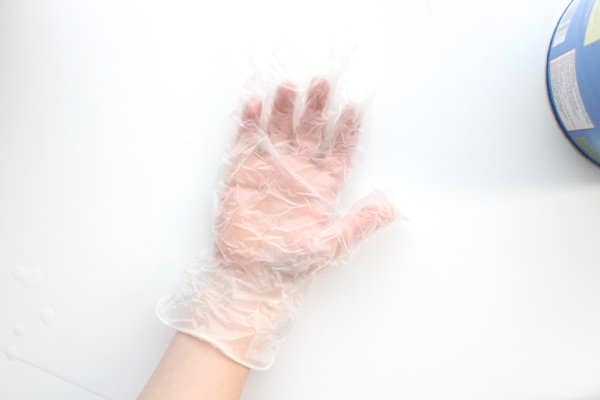How do Arctic Animals Stay Warm in Icy Water?

Winter is always a fun time to talk about arctic animals. I absolutely loved this idea from Discover and Learn Preschool for exploring how arctic animals stay warm in icy water! Animals like walruses, seals, and polar bears all have a thick layer of fat, called blubber, that keeps them warm in the icy waters of the Arctic and Antarctic. And polar bears have black skin underneath two layers of fur that help trap the heat when they are on land.
Here is a fun fact: Although you often see Polar Bears and penguins together in books and movies, they actually live at opposite ends of the earth. Polar Bears only live in the arctic (North Pole) and penguins live in the Antarctic (and other parts of the Southern Hemisphere).
Want to see if a layer of blubber can really help you stay warm in icy water? Try this fun experiment!
Go here to find all of the directions.
Here’s what you’ll need: a bowl of icy water, Crisco (or vegetable shortening), latex or vinyl gloves, and plastic wrap.






Check out more fun science experiments here.
You Might Also Like:













I recreated this experiment with my 3 yo and he absolutely loved it. http://mindbombmom.com/2015/04/22/explore-the-arctic/
I would love to recreate this experiment but I am having trouble finding vegetable shortening since I am in Australia. What do you recommend as an alternative?
Butter
I would like to do this with my class. Once used could the glove and crisco be transferred to another friends hand? I would not be as interested in doing this if it would take 20 cans of crisco. I would love to hear your advice. Thanks!
Someone else commented that they used two zip-top bags instead…and put the crisco in between the two bags. It might still be a little messy to pass around, but not too bad. :)
This is absolutely! So creative and educational. My family is headed to the Smoky Mountains for spring break. I have some take along fun bear crafts and this will be a fun and simple activity to do while camping too. Thank you so much!
I did this with my preschoolers, but this is how I made a bag that was interchangeable between each child and not messy. I filled one gallon size Ziploc baggie with Crisco, then with my hand in a plastic glove, I made a well in the Crisco and inserted another gallon size Ziploc baggie in it. I made certain the Ziploc portion of the inner bag was about 1-2 inches above the Ziploc part of the Crisco filled bag. Then I duct taped the 2 bags together, completely covering the outer bag zip portion to the inner bag, making sure none of the Crisco could ooze out from the outer bag. Now the inner bag, I can freely zip/unzip and the kids can take turns putting their hands in the “blubber” then into the ice water. Worked great!
Brilliant, Tina! I was trying to figure out a Covid-friendly way for each of my in-person pre-K’s to be able to experience the blubber effect without sharing hand space. This is great and we have plenty of small, plastic gloves for each child to have their own & toss.
Thanks for passing on your GREAT idea!! Ms. Rosie in MN.
I’m definitely using this for the Boys and Girls Club I work at. Thank you for sharing!